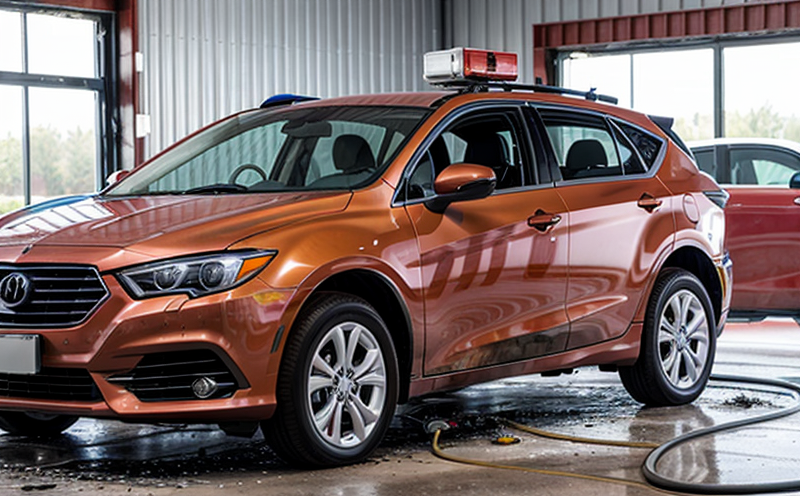Laboratory Testing of Automotive Plastic Trim Fire Behavior
Automotive plastic trim materials are a critical component in modern vehicles. These materials must not only meet aesthetic and functional requirements but also comply with stringent fire safety standards. The laboratory testing of automotive plastic trim fire behavior ensures that these materials can withstand the rigors of real-world environments without posing a risk to vehicle occupants or infrastructure.
The process involves controlled experimentation designed to simulate various potential ignition sources, such as electrical shorts, smoking cigarettes, and external flames. By subjecting samples to these conditions in a laboratory setting, we can accurately measure the flammability characteristics of plastic trim materials. This allows manufacturers to identify any deficiencies early on in the product development cycle.
One key aspect of this testing is ensuring that all specimens are prepared according to industry best practices. Proper preparation ensures consistent results across multiple trials, which is crucial for obtaining reliable data. For example, certain types of plastic may require specific drying times or conditioning environments before undergoing flame exposure tests. Failure to adhere strictly to these procedures could lead to misleading conclusions about the flammability properties of a given material.
Another critical factor in assessing automotive plastic trim fire behavior is selecting appropriate instrumentation for measuring key performance indicators like heat release rate (HRR), smoke production, and carbon monoxide emissions. The choice of equipment directly impacts the accuracy and reproducibility of test results. Commonly used apparatus includes cone calorimeters, oxygen index testers, and gravimetric analyzers.
Once tested, it is essential to interpret the data correctly to draw meaningful insights into how well a particular plastic trim performs under fire exposure conditions. This involves comparing measured values against relevant international standards such as ISO 19237 or ASTM E648-15a. Compliance with these specifications demonstrates that the material meets minimum safety requirements set forth by regulatory bodies worldwide.
Furthermore, understanding the underlying mechanisms responsible for flame propagation helps guide improvements aimed at enhancing fire resistance further. Factors like chemical composition, molecular structure, and surface finish all play roles in determining a plastic's susceptibility to ignition or spread of flames once ignited. By leveraging this knowledge during formulation stages, manufacturers can develop more robust formulations tailored specifically towards meeting both internal quality targets as well as external regulatory mandates.
- Quality and Reliability Assurance: Ensuring consistent performance across batches through rigorous quality control measures.
- International Acceptance and Recognition: Meeting global standards ensures acceptance by international markets.
Benefits
The benefits of undergoing laboratory testing for automotive plastic trim fire behavior extend beyond mere compliance with regulations. By incorporating this service into your product development process, you gain several advantages:
- Enhanced Safety: Identifying potential hazards early on helps eliminate risks associated with flammable materials.
- Improved Reputation: Demonstrating commitment to safety enhances brand image and fosters customer trust.
- Cost Savings: Early detection of issues reduces costs related to recalls or redesigns later in the product lifecycle.
Quality and Reliability Assurance
Ensuring high-quality standards is paramount when dealing with automotive parts, especially those involving fire safety. Quality assurance in laboratory testing of plastic trim involves several steps:
- Sample Preparation: Specimens must be prepared consistently to ensure accurate and reproducible results.
- Instrument Calibration: All equipment used for testing should be regularly calibrated to maintain precision.
- Data Analysis: Rigorous analysis of collected data helps identify trends and patterns that could indicate areas needing improvement.
International Acceptance and Recognition
To gain recognition from international markets, manufacturers need to adhere to global standards. Here are some notable organizations involved in setting these norms:
- ISO 19237:2015 (Plastics—Determination of Burning Behavior by Cone Calorimeter Method)
- ASTM E648-15a (Standard Test Method for Determining the Oxygen Index of Plastics and Related Materials)





